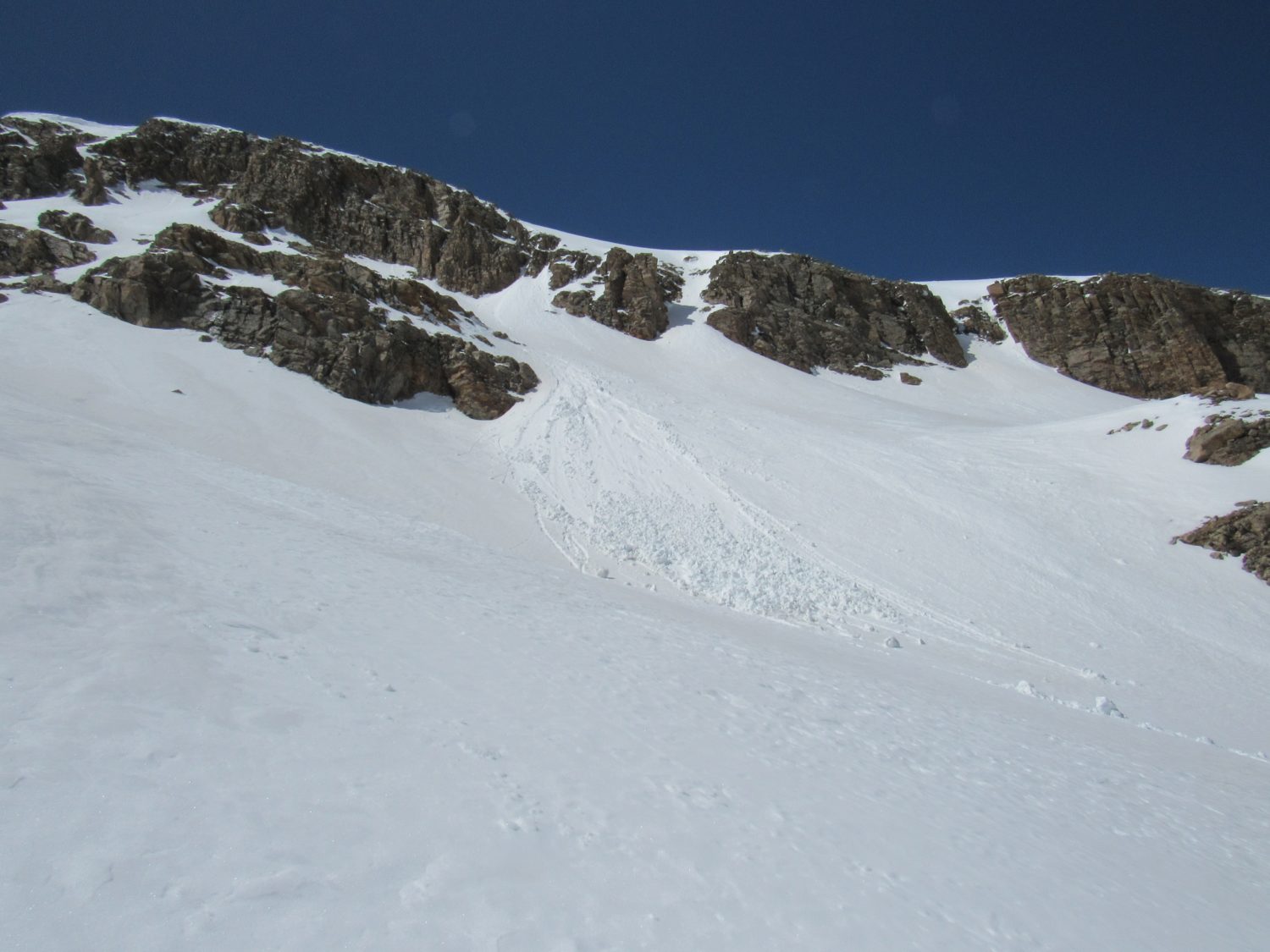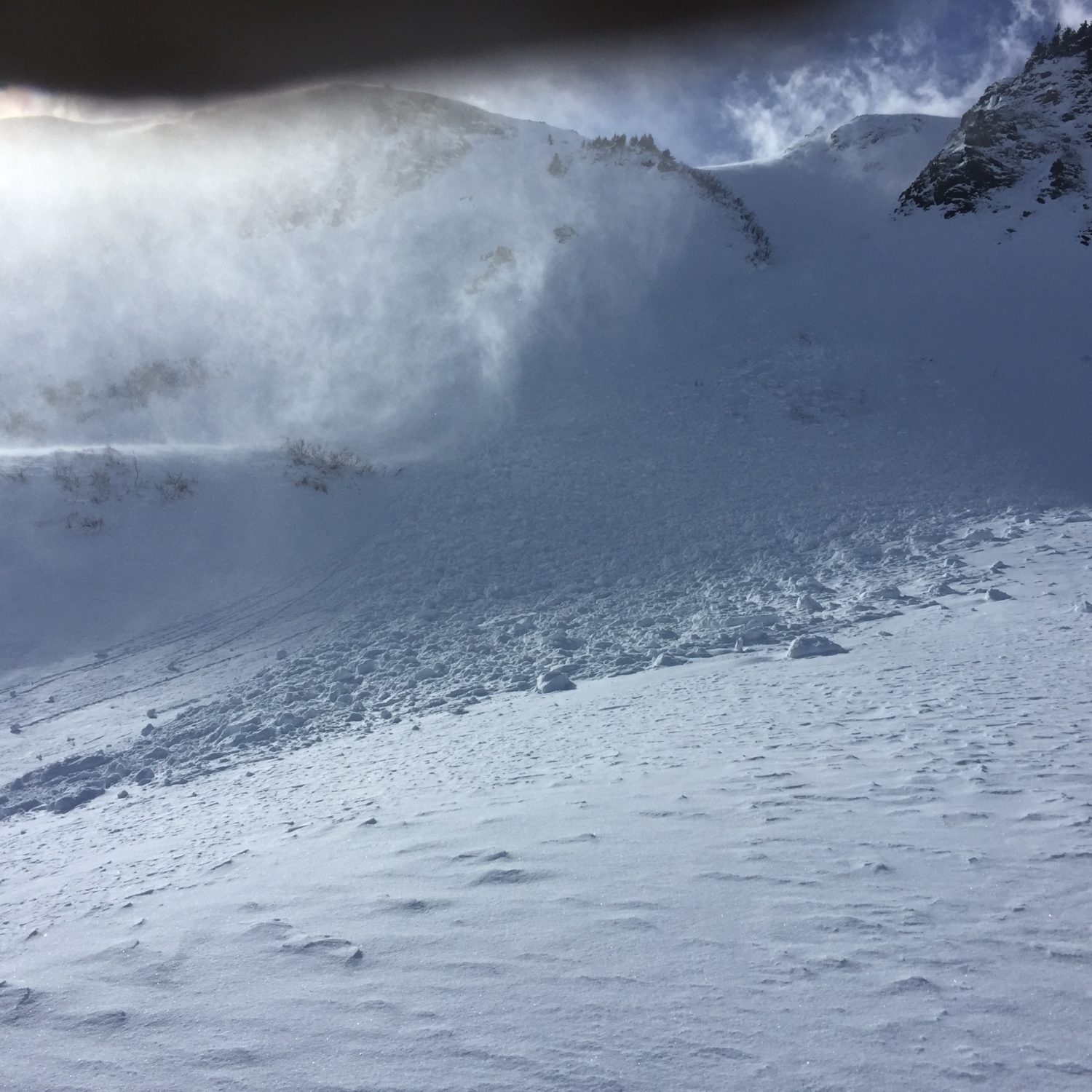
Statewide avalanche observations from Colorado Avalanche Information Center (CAIC):
Colorado is getting its first measurable snowfall of the season. Snowfall is well distributed, with nearly all mountain ranges in the state seeing some accumulating snow above 10,000-feet. There isn’t yet enough snow to raise serious avalanche concerns, but with another wet week ahead of us, it’s time to start thinking about avalanches on steep, snow-covered slopes. Once snow piles up or drifts deep enough to obscure the ground cover avalanches are possible. This doesn’t take much on grassy slopes or steep rock slabs. We could see a foot of total accumulation by mid to late next week above 11,000 ft, and this will certainly be enough to make avalanches a distinct possibility.
Nearly every fall, avalanches catch eager riders and late-season hikers off-guard. Hunters traveling through the high country need to exercise caution on steep, snow-covered terrain. Please be thinking avalanche if you visit steep slopes in the high country. Below we describe some considerations for early-season fall avalanche concerns.
We will update the Statewide Avalanche Conditions as necessary. On November 1, 2018, we will resume our daily weather forecasts. Our backcountry avalanche forecasts will begin in mid-November.
If you are going into the Colorado high country use our Weather Stations by Zone page to check current conditions.

Avalanche and Snowpack Discussion
Avalanches are possible in the mountainous areas of Colorado whenever you find snow on a steep slope. In general, you should consider the consequences of being caught in an avalanche before you cross any steep, snow-covered slope, but below are some avalanche problems you may encounter this fall.
Most avalanches happen during or right after a snowstorm. However, any time new snow falls and the wind moves it through the terrain, avalanches are possible. New snow often has a hard time adhering to hard, icy old snow surfaces, so a fall snowstorm can produce small avalanches if it falls onto old snow, grassy areas or rock slabs. The best way to manage these avalanches in the fall is to have a current weather forecast, recognize when there is enough snow to produce avalanches and select terrain that minimizes your exposure to the risk. We will update the Field Reports as information comes in, so please send us your observations.
Storms Slab avalanches are the release of a soft cohesive layer (a slab) composed of new snow that breaks within the storm snow or on the old snow surface. They often form when new snow falls with light winds or in wind-sheltered areas. They typically last for a few days. You can reduce your risk from Storm Slabs by waiting for a day or two after a storm before venturing into steep terrain. Storm slabs are most dangerous on slopes with terrain traps like gullies or cliffs, or slopes that end in timber or scree fields.
With Wind Slab avalanches, wind-drifted snow forms the cohesive layer (a slab). Wind typically transports snow from the upwind sides of terrain features and deposits snow on the downwind side. Drifted snow is often smooth and rounded and sometimes sounds hollow. They form in specific areas leeward of terrain features. You can reduce your risk from Wind Slab avalanches by sticking to wind-sheltered or wind-scoured areas and avoiding drifted spots.
Loose Dry avalanches are a release of dry, unconsolidated snow. They start at a point and entrain snow as they move downhill, forming a fan-shaped avalanche. Loose Dry avalanches are usually relatively harmless to people. They can be dangerous if they catch and carry you into or over terrain traps like gullies or cliffs, or slopes that end in timber or scree fields.